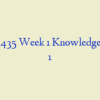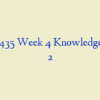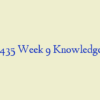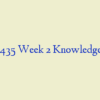Description
NSG 6435 Week 4 Quiz- Question and Answers – South University
- A school-age client presents to the clinic to establish care. The child has autism, facial dysmorphia, and growth retardation. The provider suspects the child has what condition?
- A 8-year-old client was recently discharge from the hospital following an episode of meningitis. The client presented to the clinic for a follow-up appointment post discharge. The provider understands that the client’s is at increased risk for which complication(s)? (check all that apply)
- A client with history of bilateral tympanostomy tube insertion presents to the clinic c/o otorrhea. The provider confirms the complaint. What is the best treatment for this condition?
- The gold standard in diagnosing acute otitis media is:
- A provider is caring for a new client whose had recurrent episodes of and failed treatment for acute otitis media. What is the next best intervention?
- A 16 year-old-client presents to your clinic c/o sore throat and 101°F temperature. The provider learns that the client had a sore throat approximately 1 week ago. On exam, client is positive for cervical lymphadenopathy, enlarge left tonsil, edematous pharynx and uvula displacement. What condition does this client most likely have?
- A 5-year-old client presents to the clinic for an annual physical. While performing the physical exam, the provider attempts to examine the client’s ears. What does the provider do?
- What are the most common causes of bacterial pneumonia in neonates (select all that apply)?
- An ill appearing 3-month-old-infant is presented to your clinic. The parent reports that their child has a fever, persistent cough, rhinorrhea, wheezing, hypoxemia, and anorexia for 4 days. After the provider’s exam and work-up, the child is diagnose with Bronchiolitis. What is the most likely treatment option for this infant? nsg 6435 week 4
- An ill-appearing child is present to your clinic with a fever, sore throat, restless behavior, dysphagia, drooling, and inspiratory distress without stridor. The child tests positive for Haemophilus influenzae type b (Hib). What is the most likely diagnosis?






